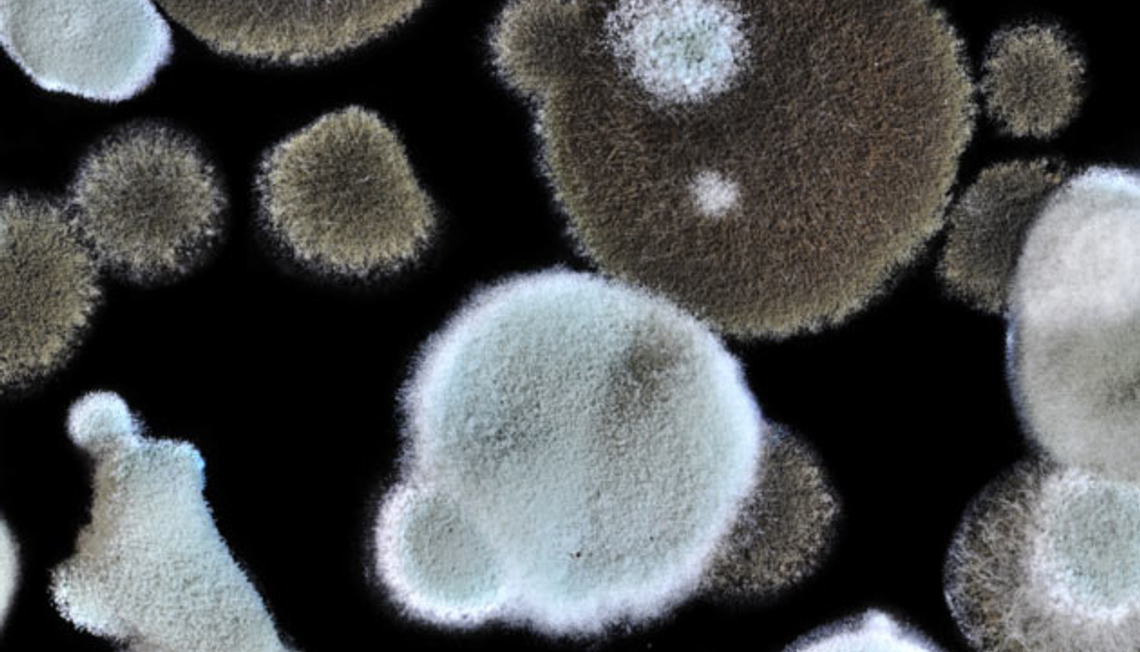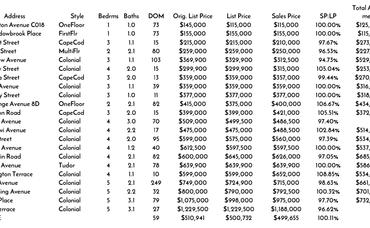
With a summer and fall filled with rainy days, mold should be top of mind for homeowners. We are not talking about the “good mold” that is found in medicine and cheese, or even the normal mold that is always airborne or found in the corners of our showers. We are talking about the “BAD” mold. Even the cleanest homes have some mold, but if the problem is allowed to fester it could cause serious health issues. Adam Forster of PuroClean, our go-to mold guy, told me that there really is no healthy kind of mold, and it can affect people in many different ways. Some of the common reactions to mold include difficulty breathing, coughing, sneezing, and sinus congestion, but some people do not react at all.
According to the CDC website, studies have been done that link adverse health effects in adults and children to the presence of mold. They say, “If you can see or smell mold, a health risk may be present and you should remove it. Since the effect of mold on people can vary greatly, either because of the amount or type of mold, you can not rely on sampling and culturing to know your health risk. Also, good sampling for mold can be expensive, and standards for judging what is and what is not an acceptable quantity of mold have not been set. The best practice is to remove the mold and work to prevent future growth.”
Here’s what you need to know in order to recognize and deal with a possible mold problem.
Look for visual signs of mold growth
There are literally thousands of mold species, and they don’t all look the same. Adam said, “Generally, black mold is the most unhealthy, but mold can come in many different colors.” The most common types of mold you may find in a house often look like dirt or soot. If you find something that resembles dirt in an area that may have experienced moisture, such as a bathroom, there’s a good bet that it’s mold. Mold can grow on paper, dust, lint, fiberboard and wood, so be sure to check these surfaces in areas that have dampness or have recently flooded.
Notice any musty smells
Mold has a familiar smell that can be described as musty or damp. It’s similar to the smell you’d encounter in a store full of old books. While this scent may not always indicate a mold problem, it should alert you to be aware of other signs of mold in the house.
Check for water problems
Another indication that there could be a potential mold problem is the presence of water damage. If a home has sustained any prolonged exposure to water, such as a flood, that’s good reason to believe there may be mold growing in those areas that were affected. Look for water stains on walls, ceilings, and floors as well as bubbling or cracking paint or wallpaper. Warped wood also indicates previous water damage that could lead to a mold problem. If there are any water leaks from pipes or faucets, be aware that mold could be hidden behind the wall or on another surface where the water seeped.
What to do if you find mold
Mold needs moisture to survive, so the most important repair is to cut off the water supply that’s causing the mold to grow. If the mold growth is small, less than about 10 square feet, you can tackle this challenge on your own by thoroughly cleaning the affected surface with commercially available products, soap and water, or a bleach solution of no more than 1 cup of household laundry bleach in 1 gallon of water as per the CDC.
When to call an expert
If your mold problem is on a larger scale, it may be necessary to call in a professional mold remediation company. An expert can properly clean and dry the area so that the mold does not cause allergic reactions.
PuroClean uses a process called “sandwiching” to address mold in attics and basements. A hepa vacuum, designed to trap mold spores, is first used to clean the surface. Then the surfaces are wiped with an antimicrobial product developed to kill the mold. And finally the surfaces are again vacuumed with the hepa vacuum to collect any remaining spores. An air scrubber is then used for a couple of days to trap any remaining mold spores that may be present in the air. In the basement, a sealant is used that adheres to masonry to seal in whatever spores may remain and prevent the mold from growing back.
How to prevent mold
Moisture control is the key to mold control. Adam said, “Ventilation is key to preventing mold growth in the attic. And it is very important to keep water away from the house.” He told me that one of the most common causes of mold growth in an attic is contractors who cover up soffit vents with insulation, thus preventing moisture from escaping. A common cause of mold growth in the basement is the failure of the gutter system. Adam said, “It is important to observe your house after a significant rain storm. Look for pooling water around your foundation. Check to be sure your patio slopes away from your house and your plantings are not causing water to collect against the foundation. Keep your gutters cleaned, and check to be sure the leaders move the water away from your home.” Act quickly to prevent mold growth. If water damage is addressed within 24-48 hours, mold will not usually grow. And keep indoor humidity as low as possible through the use of dehumidifiers and air conditioners.







 By submitting information, I am providing my express written consent to be contacted by representatives of this website through a live agent, artificial or prerecorded voice, and automated SMS text at my residential or cellular number, dialed manually or by autodialer, by email, and mail.
By submitting information, I am providing my express written consent to be contacted by representatives of this website through a live agent, artificial or prerecorded voice, and automated SMS text at my residential or cellular number, dialed manually or by autodialer, by email, and mail.
